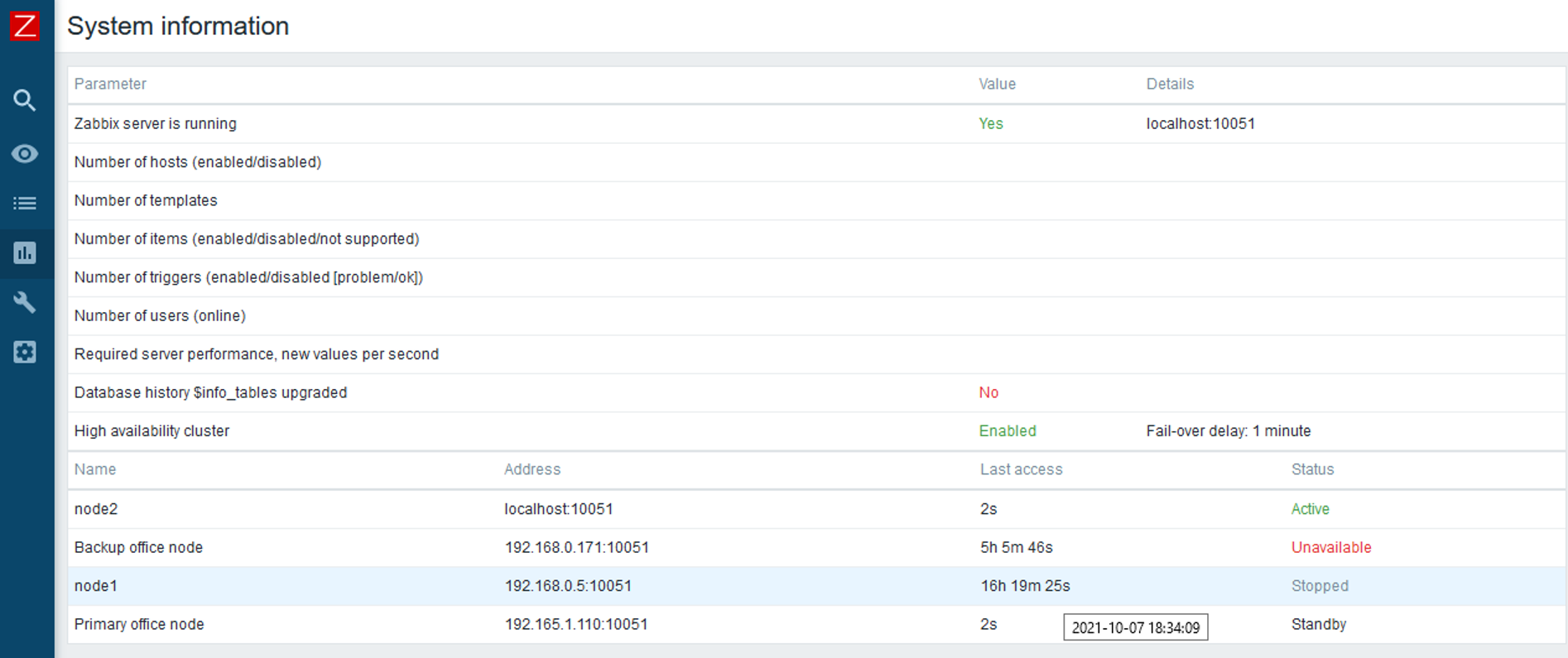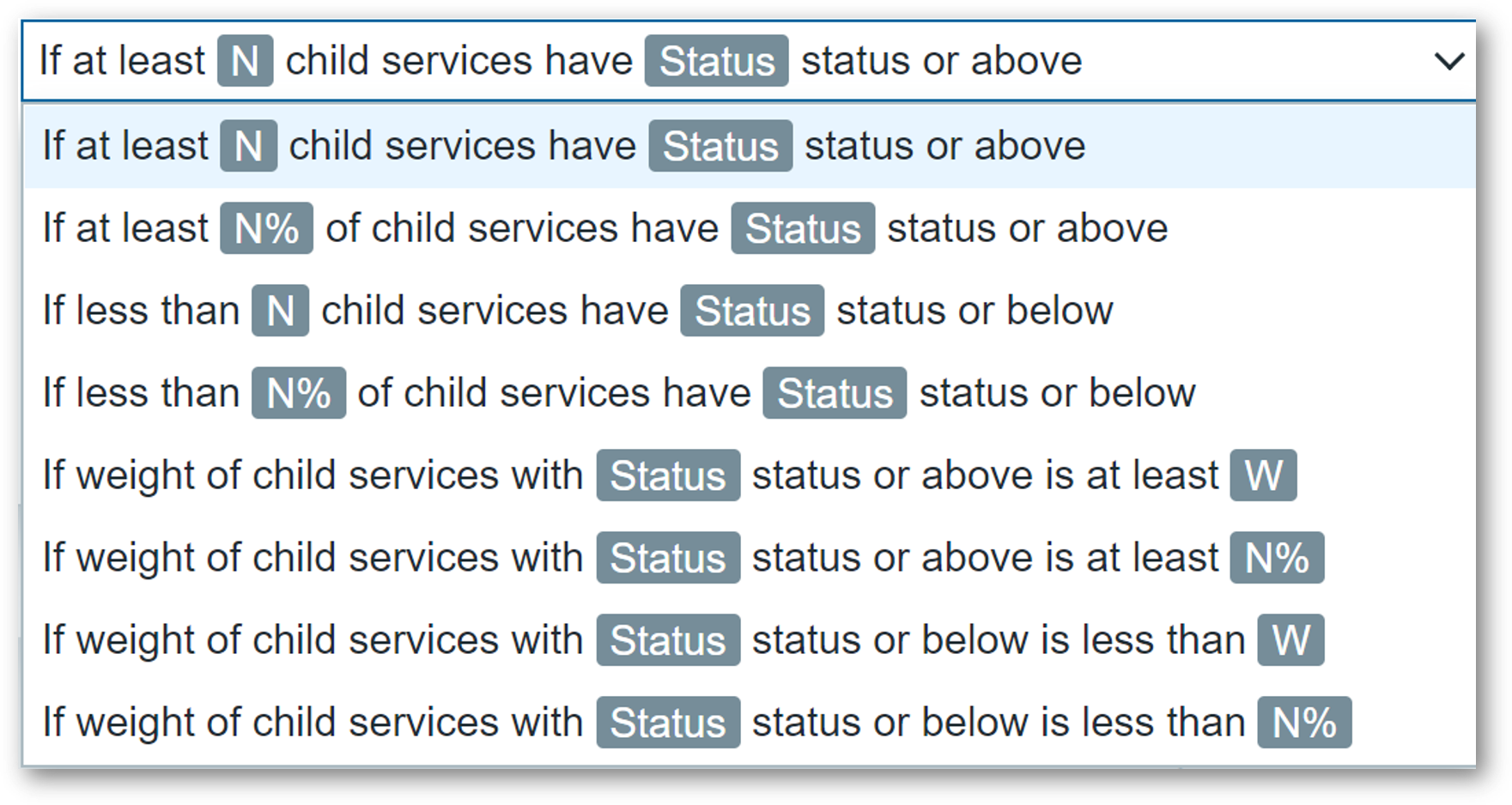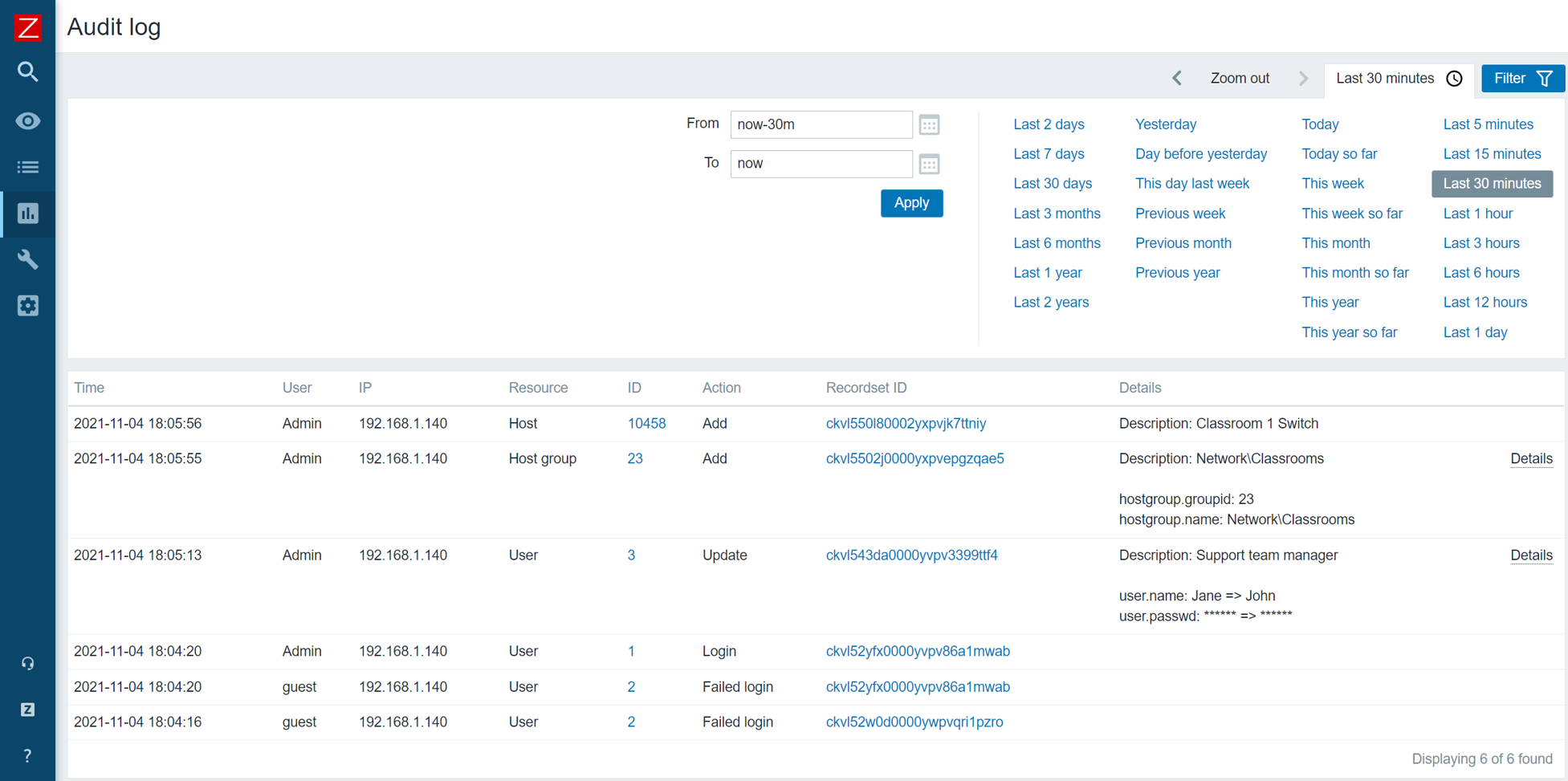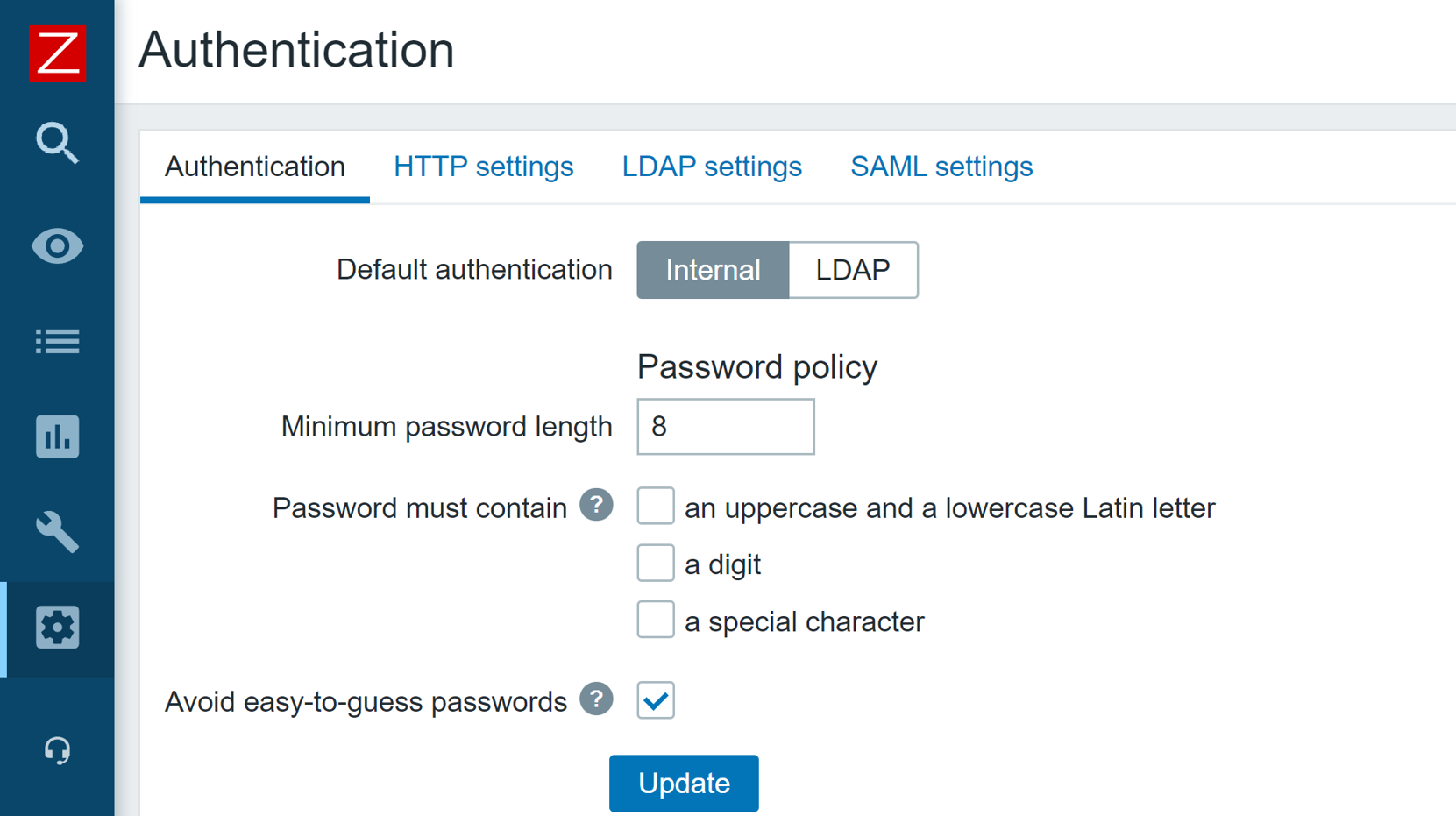Post Syndicated from Arturs Lontons original https://blog.zabbix.com/zabbix-6-4-is-out-now/25444/
Zabbix team is pleased to announce the release of the latest Zabbix major version – Zabbix 6.4. The release delivers many long-awaited improvements, such as Just-in-time LDAP and SAML user provisioning; support of older Zabbix proxy versions for simplified proxy management and zero–downtime Zabbix upgrades; near-instant configuration sync across Zabbix agents and proxies, and much more!
New features and improvements
Just-in-time (JIT) user provisioning
Zabbix 6.4 adds support of JIT user provisioning for LDAP and SAML authentication.

Zabbix administrators can now configure user provisioning by selecting the LDAP group pattern for matching and automatically assign User groups and User roles to the discovered users. Media types can also be mapped based on LDAP/SAML attributes.


Cause and symptom events
Zabbix 6.4 adds the ability to mark events as Cause or Symptom events. This allows us to filter events in a way, where we can see only root cause problems instead of being overwhelmed by symptom events. It is also possible to pause action operations for symptom events as to avoid unnecessary noise.



Instant propagation of configuration changes
Continuing to build on changes introduced in Zabbix 6.2 (Collecting only configuration change deltas), Zabbix 6.4 introduces instant configuration synchronization across passive and active agents and proxies.
- Instead of receiving the full configuration copy every 2 minutes (old behavior), in Zabbix 6.4 active agent receives the configuration copy only when changes have been performed
- RefreshActiveChecks parameter now supports a range 1-86400 (old range: 60-3600)
- The ProxyConfigFrequency parameter is now used in both Zabbix server (for passive mode) and Zabbix proxy (for active mode) configuration files
- ConfigFrequency parameter in Zabbix proxy configuration is now deprecated
- Default ProxyConfigFrequency parameter is 10 seconds (down from 1 hour)
This also improves the performance of Zabbix servers and proxies, since only configuration deltas are synced. As for active agents – the active agent receives a full configuration copy only when any changes are detected in the configuration instead of receiving it every RefreshActiveChecks interval (old behavior)
New SNMP walk item for bulk collection and discovery of SNMP metrics
A new SNMP agent walk item has been introduced. The item looks at a specified OID or OIDs and polls their indexes by suing the SNMP GetBulk requests. An SNMP GetBulk request can provide better performance and more rapid metric collection and discovery from enterprise-tier SNMP devices.
For example:
walk[1.3.6.1.1,1.3.6.2]
Result:
1.3.6.1.2.1.1 = STRING: "<value1>" 1.3.6.1.2.1.2 = STRING: "<value2>" 1.3.6.1.2.1.3 = STRING: "<value3>" 1.3.6.2.1 = INTEGER: 10 1.3.6.2.2 = INTEGER: 20
Textual values can then be transformed to JSON, which can serve as a master item for low-level discovery rules:

Resulting values:
[
{"{#SNMPINDEX}":"7","{#IFALIAS}":"Uplink PT","{#IFTYPE}":"6"},
{"{#SNMPINDEX}": "8","{#IFALIAS}": "Uplink FB","{#IFTYPE}":"6"},
{"{#SNMPINDEX}": "473","{#IFALIAS}":"lag","{#IFTYPE}":"161"}
]
Once the data is converted to JSON, we can use SNMP walk value preprocessing step together with LLD macros, to create dependent item prototypes:

Support of data collection for outdated proxies
To improve the Zabbix component upgrade workflows (especially for large environments), outdated proxies can still perform data collection with a newer Zabbix server version:
- Proxy is fully supported if it has the same major version as the Zabbix server
- Proxy is marked as outdated if its major version is older than the Zabbix server but not older than the previous LTS release
- Outdated proxies still support data collection and remote command execution
- In other scenarios, the proxy becomes not supported

| Server version | Current proxy version | Outdated proxy version | Unsupported proxy version |
| 6.4 | 6.4 | 6.0, 6.2 | Older than 6.0; newer than 6.4 |
| 7.0 | 7.0 | 6.0, 6.2, 6.4 | Older than 6.0; newer than 7.0 |
| 7.2 | 7.2 | 7.0 | Older than 7.0; newer than 7.2 |
New menu layout
Zabbix menu layout has been redesigned. The goal of the new menu layout is to provide logical and consistent access to main Zabbix features.

Real-time streaming of metrics and events over HTTP
In addition to streaming collected metrics and events to files, Zabbix 6.4 adds the option to stream metrics and events over HTTP. Zabbix administrators have the option to filter the data for streaming by using tag filters. A new Connectors section has been introduced under Administration – General. Here Zabbix administrators can define an external system where item values and events should be pushed to.

Zabbix 6.4 can be used as a source of information for other applications, analytics reports, and AI engines by streaming metrics and events over HTTP in real time. Metrics and events can be streamed to message brokers like Kafka, RabbitMQ, or Amazon Kinesis to adapt the behavior of external systems in real time.
Template versioning
Template versioning has been introduced to improve template management and ease of use. Templates are now marked with vendor ar version fields, which are visible in Zabbix frontend; these fields can also be added when writing a custom template.

Development framework for Zabbix widget creation
Zabbix has a large developer community creating their own custom frontend modules, widgets and Go plugins. In Zabbix 6.4, our goal was to streamline this process by creating a development framework for widget creation. To achieve this, the following changes have been introduced:
- Widgets have been converted to modules
- Modules are now fully self-contained and modular
- Built-in widgets reside in ui/widgets
- Custom widgets reside in ui/modules/<widget>
- Adding new widgets is as simple as adding new files without changing the existing files
In addition to these changes, we have also added a new Developer Center section to our documentation. The section contains guides, tutorials and code examples to guide our community in developing Frontend modules and widgets, as well as help with Zabbix agent 2 custom Go plugin development.

Other features and improvements
The release includes many other changes:
- Simple check, External check, SSH agent, Telnet agent item types now do not require an interface to be present on the host
- Pre-configured email media type settings for Gmail and O365 email providers
- Dynamic item value widget thresholds
- Option to define custom labeled links for hosts and events
- Ability to label trigger URLs
- Improved preprocessing performance and thread-based preprocessing workers
- Ability to label aggregated datasets in Graph widget
- SQLite3 Zabbix proxies now automatically recreate the SQLite3 database file during an upgrade
- A host status filter (enabled/disabled) has been added under Data collection – Hosts
- Additional filtering options have been added to the Action log
- Action log now supports import to CSV
- Multiple context menu improvements to Host, Item and Event context menus
- Old password verification is now required when changing your internal Zabbix user password
- Value cache performance improvements when working with metrics that get updated less frequently than once per day
- Added commands to enable profiling of rwlocks/mutexes (for debugging)
The full list of changes, bug fixes, and new features can be found in the Zabbix 6.4 release notes
New templates and integrations
Zabbix 6.4 comes pre-packaged with many new templates and integrations for the most popular vendors and cloud providers. Multiple existing templates have also received improvements:
- Microsoft Azure MySQL servers
- Microsoft Azure PostgreSQL servers
- Microsoft Azure virtual machines
- Low-level discovery improvements in AWS by HTTP template
- Veeam Backup Enterprise Manager
- Veeam Backup and Replication
- Cisco Nexus 9000 Series
- BMC Control-M
- Cisco Meraki dashboard
- OS processes by Zabbix agent
- Improvements to filesystem discovery in official Zabbix OS templates
Zabbix 6.4 introduces a webhook integration for the Line messaging app, allowing Zabbix events to be forwarded to the Line messenger.

Zabbix 6.4 packages and images
Official Zabbix packages and images are available for:
- Linux distributions for different hardware platforms on RHEL, CentOS, Oracle Linux, Debian, SUSE, Ubuntu, Raspbian
- Virtualization platforms based on VMWare, VirtualBox, Hyper-V, XEN
- Docker
- Packages and pre-compiled agents for the most popular platforms, including macOS and MSI packages for Microsoft Windows
You can find the download instructions and download the new version on the Download page.
One-click deployments for the following cloud platforms are coming soon:
- AWS, Azure, Google Cloud Platform, Digital Ocean
Upgrading to Zabbix 6.4
In order to upgrade to Zabbix 6.4 you need to upgrade your repository package and download and install the new Zabbix component packages (Zabbix server, proxy, frontend, and other Zabbix components). When you start the Zabbix server, an automatic database schema upgrade will be performed. Zabbix agents are backward compatible; therefore, it is not required to install the new agent versions. You can perform the agent upgrade at a later time.
If you’re using the official Docker container images – simply deploy a new set of containers for your Zabbix components. Once the Zabbix server container connects to the backend database, the database upgrade will be performed automatically.
You can find detailed step-by-step upgrade instructions on our Upgrade procedure page.
Join the webinar
If you wish to learn more about the Zabbix 6.4 features and improvements, we invite you to join our What’s new in Zabbix 6.4 public webinar.
During the webinar, you will get the opportunity to:
- Learn about Zabbix 6.4 features and improvements
- See the latest Zabbix templates and integrations
- Participate in a Q&A session with Zabbix founder and CEO Alexei Vladishev
- Discuss the latest Zabbix version with Zabbix community and Zabbix team members
This is a public webinar – anyone can sign up, attend and have their questions answered by the Zabbix team!






